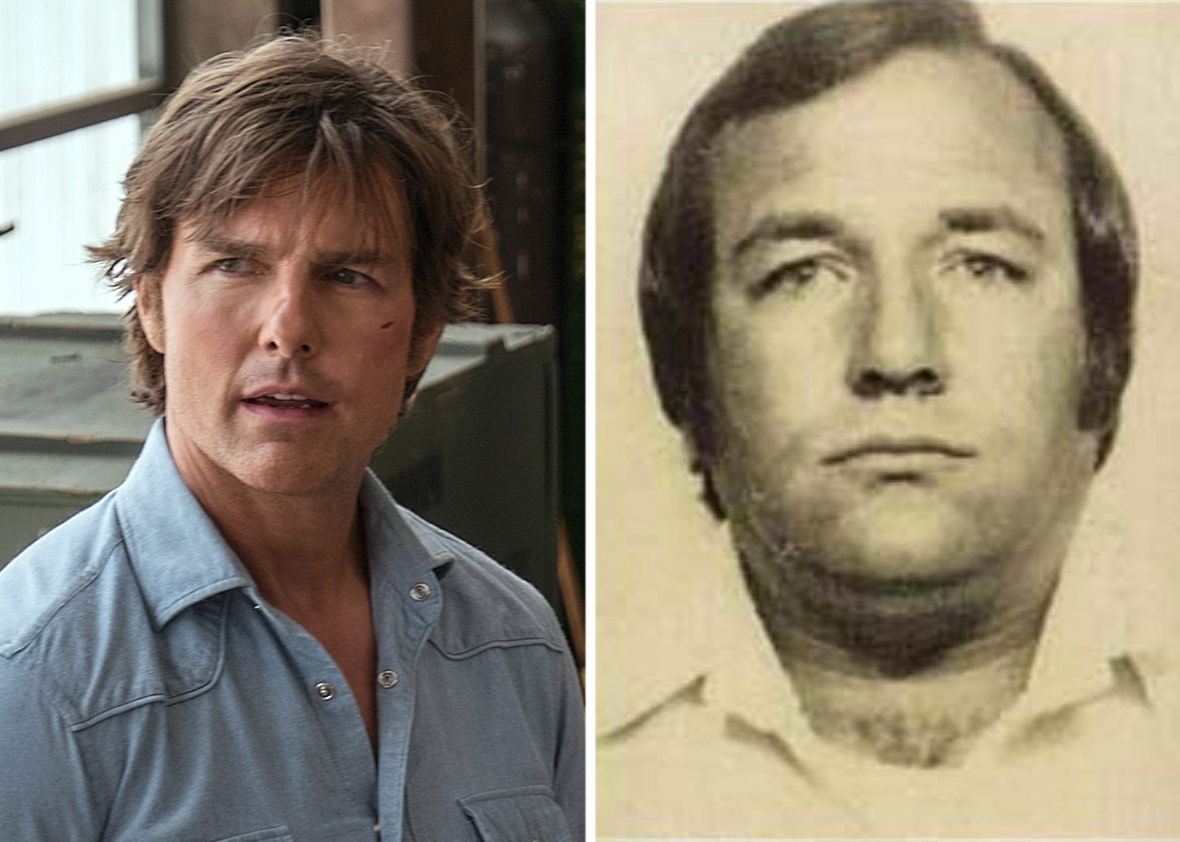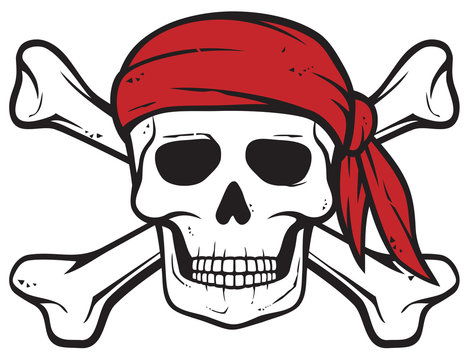I haven't studied the case in any detail, but wasn't Barry Seal flying cocaine into the U.S.
for the CIA
back in the 1980s?
Ouch, Cheese Burgher...  Found this in a Google search today...
Found this in a Google search today...
You were saying?
What’s Fact and What’s Fiction in American Made

www.slate.com/blogs/browbeat/2017/09/29/what_s_fact_and_what_s_fiction_in_american_made.html
September 29, 2017
Like The Wolf of Wall Street, American Made is based on the real-life exploits of a “lovable” rogue, Barry Seal. Also like TWWS, it gets us rooting for our hero despite his engaging in morally questionable, not to mention illegal, activities like gun-running and drug smuggling. To win us over, it uses many of the same techniques employed by TWWS: having our dubious hero played by an extremely charismatic star, in this case Tom Cruise, fully at home in the cockpit as another cocksure pilot; giving him a gorgeous blonde wife and adorable children for whom he’s doing it all; and, that standby of engaging villains from Richard III to House of Cards’ Frank Underwood, breaking the fourth wall with confessions directly into the camera, thus making us co-conspirators.
Plus, director Doug Liman and screenwriter Gary Spinelli streamline the story to suggest Seal had rather less agency in becoming a career criminal than the actual facts would indicate.
Recruitment
In the movie, Seal is an ace pilot whose daredevil streak leads him from TWA to the CIA. He’s bored rigid flying commercial flights, so he takes to performing stunts that trigger the oxygen masks and terrify passengers. His aviation skills and reputation for sailing close to the wind lead to an approach from Schafer, a CIA agent (or possibly a composite of several) played by Domhnall Gleeson (whose father, actor Brendan Gleeson, resembles the stocky real Seal much more than sleek Tom Cruise does). Schafer recruits Seal to take reconnaissance photos of guerillas operating in Honduras, Nicaragua, and El Salvador, wooing him with a super-fast, super-nimble twin engine plane.
The real-life Seal seems to have joined up with the CIA much earlier. The late investigative journalist Alexander Cockburn contended that Seal first came into contact with the CIA in the ’60s as a special forces helicopter pilot in Vietnam and maintained links with them throughout his TWA years. Other accounts suggest his links might have gone back as far as the Bay of Pigs. Moreover, although the film suggests Seal was just an excitement-loving pilot who got swept up into espionage at the time, eight years earlier he had been attempting to fly 1,350 pounds of plastic explosives to some anti-Castro Cubans based in Mexico when he was arrested by the U.S. Customs Service. And far from resigning from TWA in 1978 to pursue this new, more exciting career in spying, he was fired in 1974 for falsely claiming medical leave when actually he was absent due to weapons trafficking. He escaped prosecution only because the CIA intervened, stating a trial would threaten national security.
Guerrilla reconnaissanceAs a good ol’ boy from Louisiana, Seal readily accepts that the rationale for taking photographs is “fightin’ communists,” and the filmmakers don’t provide much context for this assessment.
In real life, of course, one person’s communist insurgent is another person’s freedom fighter. While certainly left-wing and receiving aid and training from Cuba, the guerrilla movements in these Central American countries were primarily a reaction to brutal dictatorships and, as a 1983 presidential commission reported, “decades of poverty, bloody repression, and frustrated efforts at bringing about political reform.” Oliver Stone’s kind-of based-on-true-events Salvador (1986) gives a view of the conflict from the other side.Enter the Medellín

In American Made, Seal is just minding his own business refueling his plane in Colombia in 1980 when he is bundled into a car and taken to a hidden airstrip in the Colombian jungle. There he is made an offer he can’t refuse by three “businessmen” (one named Pablo Escobar) in need of a pilot with the skills to navigate the dangerously short runway. Already feeling undercompensated by the CIA for the loss of his TWA pension and health care, Seal is swayed by the promise of $2,000 per kilo of cocaine brought to the U.S.
In real life, according to statements in his Drug Enforcement Administration file, Seal was smuggling marijuana as early as 1976 and began smuggling cocaine in 1978, well before any contact with the cartel.
Arrested in Colombia
The film has Seal becoming buddies with cartel kingpins Escobar and Ochoa after forming a lucrative partnership and partying with them at their penthouse in Cartagena, at least until the party is broken up by the Colombian Army. The kingpins, plus Seal, are thrown in jail, but while the Colombians walk free the next day, Seal remains incarcerated until Schafer gets him out. The agent later warns Seal that the smuggler has to get himself and his family out of Baton Rouge before sunrise in order to avoid a police raid and arranges for them to relocate to remote Mena, Arkansas, where the agency provides Seal with not only a house but also an airfield.
In reality, Seal was arrested with 40 kilograms of cocaine and spent nine months in a Honduran jail. There he met Ochoa’s New Orleans business manager, who brought Seal into the Medellín cartel’s orbit in 1982. He became its chief link to cocaine markets in the southeastern U.S., with his 1981 bank records showing daily deposits of $50,000 into a Bahamian bank. Also, he moved to Mena of his own accord in 1982.Supporting the Contras
In the movie, in return for his get out of jail free card, Schafer wants Seal to fly AK-47s out of Mena to the Contras, the insurgent group tasked with overthrowing the Sandinistas, the leftwing movement that itself overthrew the Nicaraguan dictator Anastasio Somoza DeBayle in 1979 and took his place. Then Schafer ups the ante by requiring Seal to return bearing Contras who will be trained in Mena. Meanwhile, Seal’s old pals Ochoa and Escobar suggest he drop off some of his guns in Colombia and resume bringing in cocaine on the return trip.
It is certainly true that Seal’s planes (by now he had a fleet) flew from Mena to Colombia, making refueling stops in Panama and Honduras (where the Contras were training) before returning laden with approximately $13 million worth of drugs.
Cockburn, among several other journalists and historians, also alleged that a quid pro quo existed, with the CIA turning a blind eye to Seal’s drug smuggling in return for his using it as cover to get weapons to the Contras. Further, there are allegations that Seal bought several of his planes from CIA-owned companies such as Air America (itself the subject of Roger Spottiswoode’s 1990 movie of the same name) and Southern Air Transport.
The main source for the allegations that the Contras were brought for training in Arkansas is a book by a former Seal pilot named Terry Reed. However, many of those named in the book have disputed his account, with one bringing suit for libel.
Busted
In the film’s telling, the CIA abandoned Seal—getting rid of any paper trail or hard evidence that could link them to the smuggler—right before the ATF and the DEA and the FBI and the state police raid the Mena airport. Seal is charged in Arkansas with weapons, drug, and money-laundering offenses, but gets off with a community service order and is whisked off to the White House.
In reality, the DEA busted Seal for smuggling 200,000 Quaaludes into Florida in 1983. Facing a 10-year stretch, he was desperate to make a deal, but the DEA wasn’t interested. Going over their heads, he met with two members of then–Vice President George H.W. Bush’s Task Force on Drugs, offering his services as an undercover informant. Lured by the promise of getting inside information on the Medellín cartel, in March 1984 the DEA listed Seal as an official informant and got his sentence reduced.
What happened next is murky. According to Robert Joura, the DEA agent working with Seal, on the next pickup either Escobar or Ochoa told Seal the cartel was moving its base from Colombia to Nicaragua and giving a cut of its profits to the Sandinistas in exchange for use of an airfield in Managua.
But given that the cartel was operating more or less with impunity everywhere else in Central America and this would only further antagonize the U.S., another theory suggests this was a scheme cooked up by Seal and Ochoa to keep Seal on the good side of the intelligence community. At any rate, Seal went to Florida to face long-delayed sentencing on his Quaalude bust, receiving 10 years reduced to six months’ probation thanks to letters of support from the CIA and DEA.
Enter Oliver North
At this point, American Made introduces the controversial figure of Lt. Col. Oliver North, Reagan’s point man on anti-Sandinista activities, who is keen to give Seal one more mission: to obtain proof the Nicaraguan government is in bed with the cartel. To this end, they modify his new former Army C-123 transport plane so that he can take photographs unobtrusively.
Seal flies to Managua and duly obtains pictures of Escobar and Sandinista soldiers taking delivery of kilos of cocaine. But in his haste to nail the commies so that Congress will fund arms shipments, North releases the pictures before the Colombians are in custody. His cover blown, Seal is of no further use to the DEA, who promptly seize his assets. Worse, he must spend the rest of his life looking over his shoulder for a vengeful cartel.
In real life, Seal’s cover was blown even before the photographs appeared when, thanks to NSC and CIA leaks, the Washington Times ran a front-page story on the Sandinistas’ drug trafficking on July 17, 1984. But Congress was not persuaded and passed the Boland amendment prohibiting direct military aid to the Contras.
This meant that North still needed Seal to run guns for his operation, until the pilot was busted again in December 1984 in Baton Rouge, Louisiana, for smuggling marijuana. Thanks to testifying in three major drug trials over the next year that helped obtain convictions, he got off with five years’ probation along with six months at a local halfway house.
Aftermath and death
As in the movie, three men shot Seal to death as he sat outside a Salvation Army in Baton Rouge in his white Cadillac. He died on Feb. 19, 1986, and three Colombian men were convicted of his murder.
A
fter Seal’s death, a 1986–1989 Senate Foreign Relations Committee investigation popularly known as the Kerry Committee report found that the State Department had made payments to known drug traffickers from funds earmarked for Contra humanitarian assistance. (Arthur L. Liman, the director’s father, was the chief counsel for the Senate investigation, which is what got the filmmaker interested in Iran–Contra in the first place.) The Reagan administration admitted that funds from cocaine smuggling had helped fund the Contras but insisted it was a rogue operation carried out without the government’s knowledge.Even if some of the specifics vary, the film is true to two essential elements of Seal’s story. One, he made a hell of a lot of money—estimates range from $50 million (Seal himself) to $5 billion (Arkansas State Police investigators). In any case, it all seems to have disappeared. Secondly, Seal was a man caught between a rock and a hard place. As his brother Wendell said, he had become entangled in so many relationships “it was hard to tell who were the good guys and who were the bad guys.”
Ellin Stein has written for the New York Times, the Times of London, and many other publications. She is the author of That’s Not Funny That’s Sick: The National Lampoon and the Comedy Insurgents Who Captured the Mainstream.





 Found this in a Google search today...
Found this in a Google search today... 



